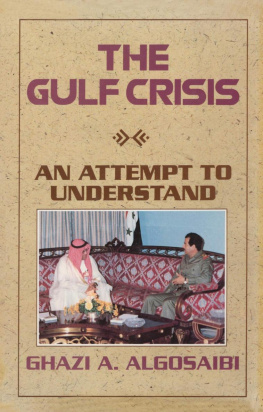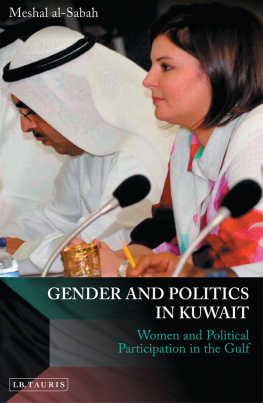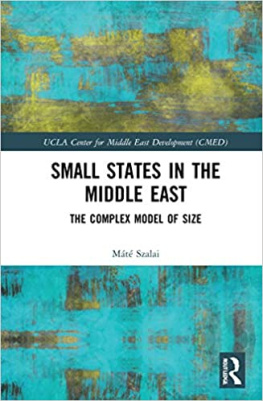First published in Arabic 1991 (1412 AH)
First published in English in 1993 by
Kegan Paul International Ltd
Published 2019 by Routledge
2 Park Square, Milton Park, Abingdon, Oxon OX14 4RN
52 Vanderbilt Avenue, New York, NY 10017
First issued in paperback 2019
Routledge is an imprint of the Taylor & Francis Group, an informa business
This translation Ghazi A. Aigosaibi 1993
All rights reserved. No part of this book may be reprinted or reproduced or utilised in any form or by any electronic, mechanical, or other means, now known or hereafter invented, including photocopying and recording, or in any information storage or retrieval system, without permission in writing from the publishers.
Notice:
Product or corporate names may be trademarks or registered trademarks, and are used only for identification and explanation without intent to infringe.
Distributed by
John Wiley & Sons Ltd
British Library Cataloguing in Publication Data
Algosaibi, Ghazi A.
Gulf Crisis: Attempt to Understand
I. Title
956.7044
ISBN 0710304595
Library of Congress Cataloging-in-Publication Data
Qusayb, Ghz Abd al-Rahmn.
[Azmat al-Khalj. English]
The Gulf Crisis: an attempt to understand / Ghazi A. Algosaibi.
p. cm.
ISBN 0710304595
1. Persian Gulf War, 1991. 2. Persian Gulf RegionPolitics and
government. 3. Hussein, Saddam, 1937. I. Title.
DS79.72Q7513 1992 9226232
956.70442dc20 CIP
ISBN 13: 978-1-138-97559-0 (pbk)
ISBN 13: 978-0-7103-0459-9 (hbk)
I am indebted to Mr Peter Mansfield
for his invaluable help in the
translation of this book from
Arabic.
He who can take
Will not beg.
al-Mutanabbi [died 965]
Dedsion-making is an extremely complex process involving many factors. These include objective and subjective, permanent and temporary factors, matters of interest and principle, the facts of history and the laws of geography. All of these factors interact within the decision-makers mind. The decision-makers psychological make-up plays a decisive role in sifting through the various factors, discarding one and focusing on another, until a decision is finally reached a decision which initially seemed as though it were spontaneous, easy and immediate.
Perhaps the most obvious indication of the complexity of the decision-making process is the hesitation which we sense in those around us and in ourselves before making any decision, regardless of how small it is. One decides to travel on a specific date, then cancels the trip, but then goes back to the original date. One decides to send a child to a certain school, then selects another school, then returns to the first choice, finally deciding on yet a third school. A woman hesitates before choosing a dress, or a piece of furniture or jewellery, for example, and this is a source of consternation for the salesperson. Any decision, regardless of its triviality, is the outcome of an interaction between many, sometimes contradictory, considerations.
The quest for any single reason to explain the decision by Iraqi President Saddam Hussein to invade Kuwait is at worst intentionally misleading and at best an oversimplification, regardless of whether it is suggested by a friend or an enemy of the Iraqi president. The insanity of which Saddam Husseins enemies speak does not explain what happened. Nor can a sincere desire to return the branch to the root (i.e., return Kuwait to Iraq) sufficiently explain what happened. The truth of the matter is that many factors were behind the decision, including the personality of Saddam Hussein himself, conditions in Iraq following the war with Iran, factors related to the wider Arab arena, international politics, and the state of Iraqi-Kuwaiti relations. Without examining the interaction of these factors, it is impossible to obtain a full or clear picture of the background and dimensions of the decision.
Let us begin with what we consider to be the most important factor: Saddam Husseins psychological make-up. Without this filter through which the final decision had to pass, all the other factors cannot explain what happened in August 1990. Three characteristics of the Iraqi leaders psychological composition concern us in this regard. The first is his burning thirst for power and the greatness that is produced by power. The second is his constant inclination toward adventurism, and the third is the persecution complex imbedded in his psyche.
Since his earliest youth, Saddam Hussein has exhibited a clear tendency toward the pursuit and accumulation of power. Psychologists can determine the role played in this by his childhood, and sociologists can study the role played by his social environment. It suffices here to conclude that, since adolescence, he has been a leader. Initially, he was the leader of a gang of youths who intimidated the residents of his quarter. He then became a leader who imposed respect for himself on the other students in his school. He then became the leader of the group that was charged with assassinating Abd al-Karim Qasim (in history if not in reality). He then became the leader of a party. Finally, he became the sole leader of Iraq.
Adventurism is the means which he used to obtain power and greatness. We can say, in fairness to the facts, that every achievement accomplished by Saddam Hussein has been based on adventurism of one type or another. His acquisition of his first pistol when he was an adolescent was an adventure. Already a teenager, his entry into school was an adventure. His decision to join the Baath Party was an adventure. His participation in the attempt to assassinate Abd al-Karim Qasim was an adventure. His escape from jail was an adventure. His return to Iraq to engage in party activity was an adventure. The first coup was an adventure. The coup overturning the coup was an adventure. The deposing of Ahmad Hasan al-Bakr was an adventure, and the war with Iran was an adventure.
In reviewing each important turning-point in Saddam Husseins life, we find that a decision to embark on an adventure lies behind each one. None of these decisions was made by chance or haphazardly. Nor were they the result of the passive interaction of influential factors and changes. Rather, they were carefully calculated initiatives fraught with dangers. A political leader may be compelled from time to time to undertake an adventure. However, adventurism is the customary, natural style of Saddam Husseins decisions. Accordingly, the decision to invade Kuwait is not unique. It is merely one link in a long, provocative chain of adventures.
Saddam Husseins constant quest for greatness through continual engagement in adventures is incomprehensible if we neglect a third feature in his psyche, namely his profound feeling of being persecuted. Decisions which appear to others as a blind passion for greatness and a destructive love of adventure appear to Saddam Hussein as no more than a natural quest for security and peace. Saddam Hussein, in his own view, has always been and will always be in a state of legitimate defence, be it self-defence or defence of the regime, homeland or honour (these things are virtually bound together in his outlook). Others describe Saddam Husseins behaviour as adventurism. He himself views his positions as having been taken in self-defence under duress.
Hence, his attempt to assassinate Abd al-Karim Qasim was in defence of freedom against authority. His escape from prison was to defend himself against execution. The first coup was in defence of the homeland. The second coup was in defence of the Baath Party. The agreement with the Kurds and the violation of that agreement were both defensive measures to preserve Iraqs unity. The Algiers agreement with Iran in 1975 and the war in 1980 were legitimate acts to perpetuate the regime. One must neither sneer nor scoff at Saddam Husseins repeated statements that he was compelled to invade Kuwait in order to defend Iraq, because he actually perceived matters in this way or something close to it.







